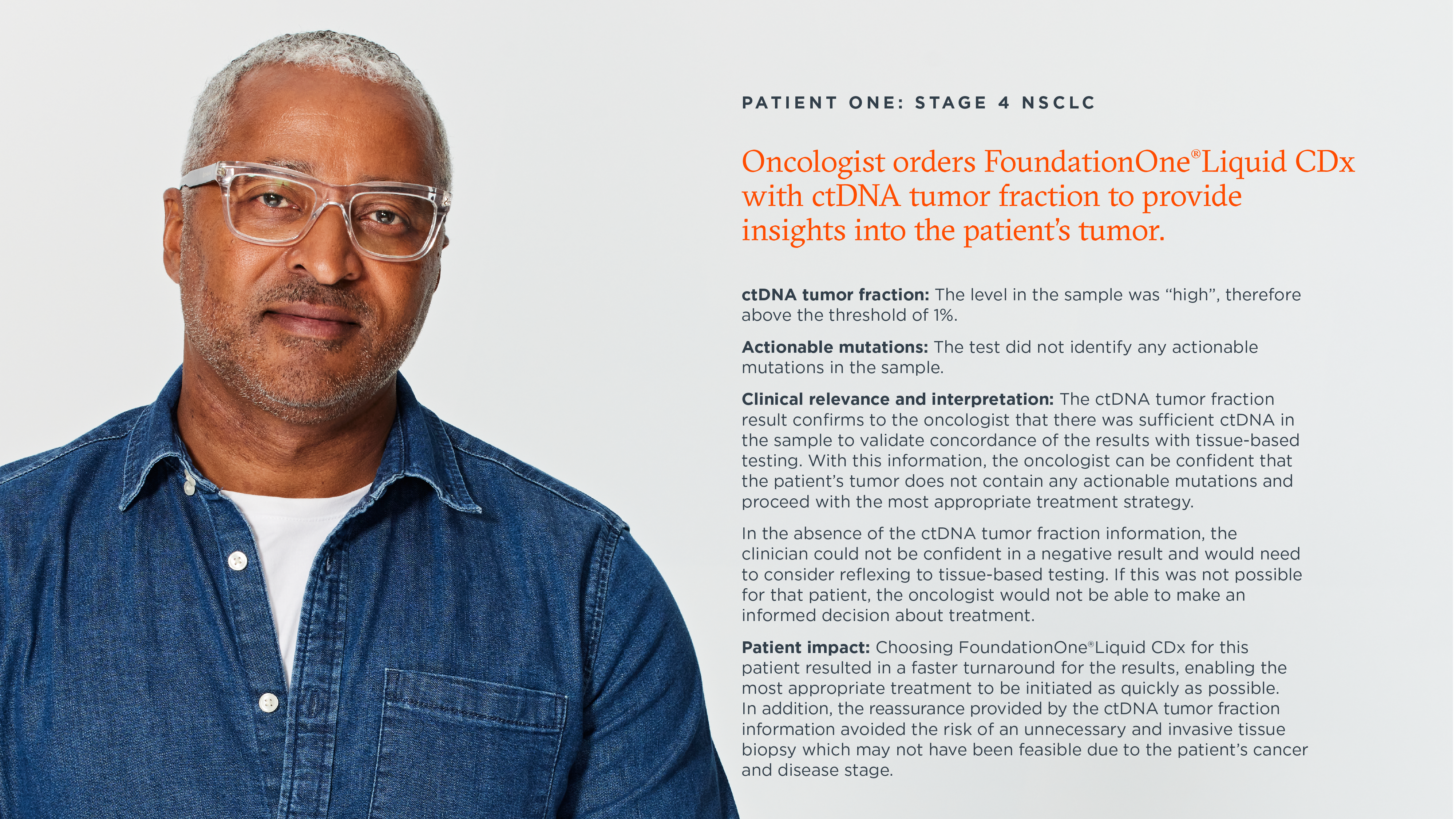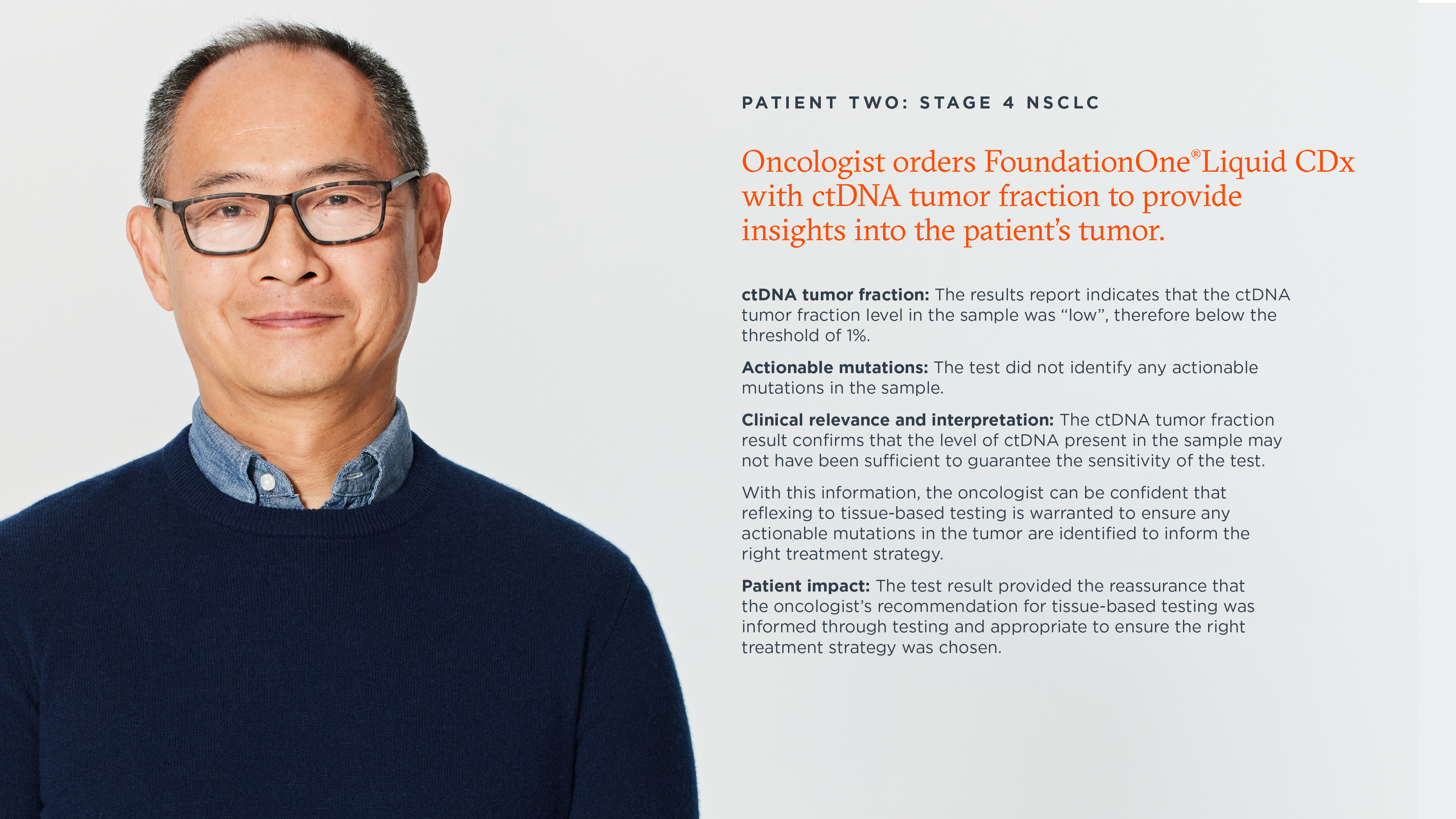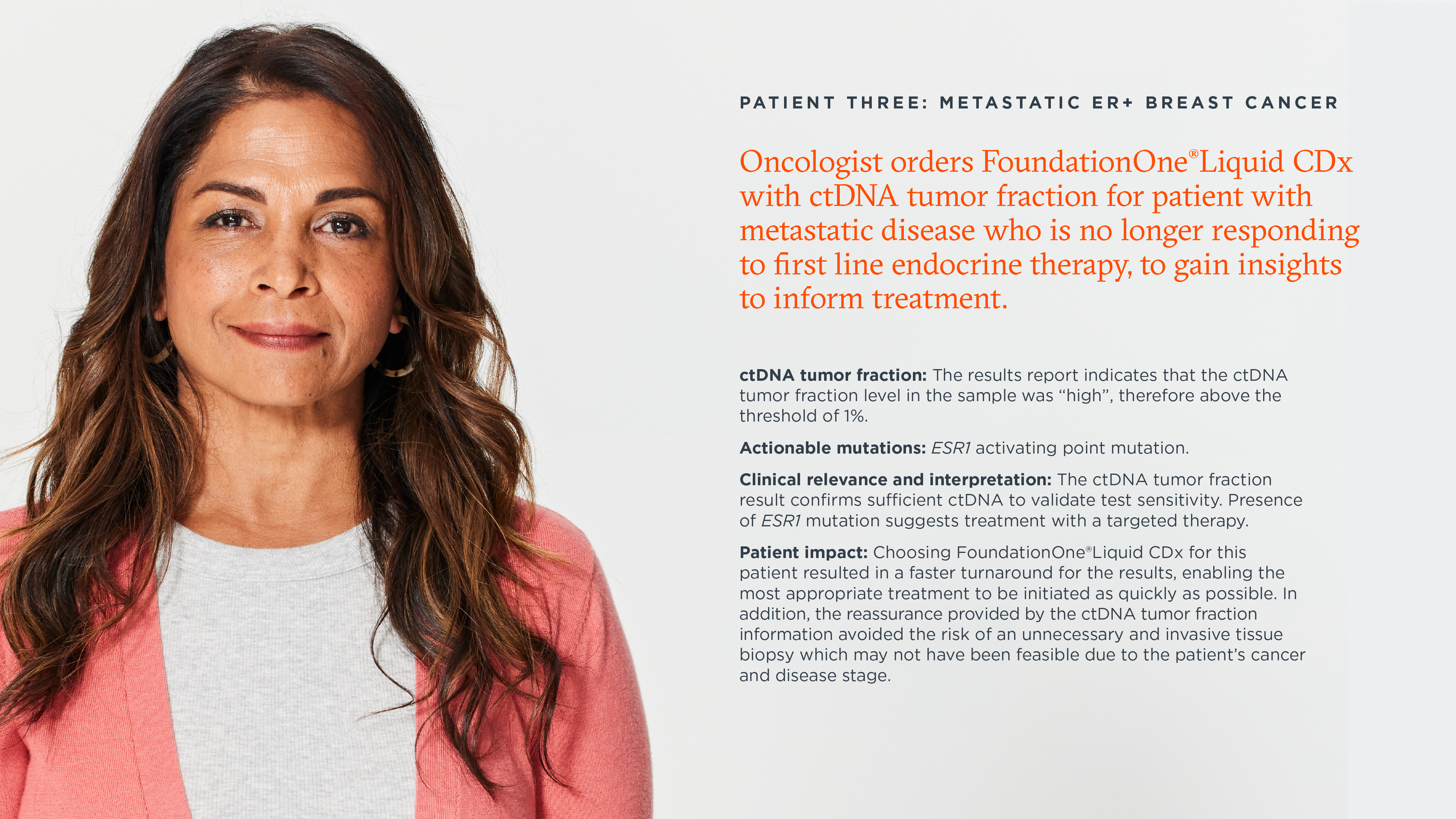In the Clinic With Mia: Further Validating Confidence in the Actionability of Liquid Biopsy Testing With ctDNA Tumor Fraction
Being an oncologist in today’s cancer landscape increasingly requires the ability to adapt and thrive in a constantly changing environment. The pace of progress is always accelerating, and it feels like new concepts, theories and technologies are reaching the clinic on an almost weekly basis.
When a new technology emerges in response to a long-standing clinical need, it has the potential to rapidly transform the clinical landscape. Adoption is predictable, with innovators and early adopters paving the way for the larger majority.
This initial phase of adoption provides valuable insights into the real-world use of a new technology, and feeds into a process of continual improvement that triggers broader uptake across the clinical landscape.
The adoption and initial clinical experience of liquid biopsy is a prime example of this process in action.
The unmet need for tissue biopsy alternatives
Since long before the genomic age of cancer arrived, there has been a clinical need for less invasive alternatives to tissue biopsy. After decades of little innovation, the rise of targeted treatments intensified the search for the ‘holy grail’ of a less invasive procedure that could provide genomic insights with the sensitivity and specificity similar to that of tissue biopsy.
The potential of liquid biopsy as the long-awaited solution triggered a renewed sense of excitement and optimism, as well as an explosion in research. Foundation Medicine’s path to the development of a blood-based solution consisted of more than a decade of research and culminated in the FDA approval of our liquid biopsy comprehensive genomic profiling test, FoundationOne Liquid CDx, in 2020.
Liquid biopsy has quickly become an important option for many patients across a variety of cancers, opening a long-awaited route to precision medicine for patients without tissue available for testing. However, there remains an important and inherent limitation to liquid biopsy that is preventing its wider adoption and use in a broader population of patients.
To be able to determine the mutations that are driving a patient’s cancer through a blood draw, the tumor must shed enough of its DNA into the blood to allow for reliable detection and for differentiation from non-tumor DNA. The challenge for liquid biopsy is that there is huge variability in the amount of DNA a tumor sheds, not just across tumor types but between patients and even between distinct tumors in the same patient.
The consequence of this is the potential for false negative results to occur because a tumor has not shed enough DNA into the blood to be detectable by a liquid biopsy test. Without the ability to distinguish between a negative result due to the absence of actionable mutations or a negative result due to the absence of sufficient ctDNA, guidelines recommend reflexing (or re-testing) with tissue testing to provide the certainty needed to guide decision-making. However, this ability to reflex to another test is not always clinically possible and increases the potential complexity, timeframe and cost of testing.
Validating the promise of liquid biopsy
Our researchers have developed a unique clinical measure called ctDNA tumor fraction which enables us to have greater confidence in the accuracy of liquid biopsy results based on the level of ctDNA in each sample.
Firstly, the level of ctDNA in each sample is determined as a percentage. Secondly, we have analyzed tens of thousands of blood and tissue test results, which has enabled us to map out the relationship between ctDNA levels and the ability of our test to identify actionable mutations at the same level of sensitivity achieved with our tissue-based testing.
As a result, we are now able to validate concordance between our liquid biopsy result and the result that tissue biopsy testing would provide at ctDNA tumor fraction levels as low as 1%. As referenced in our product label, the Limit of Detection for FoundationOne Liquid CDx can be as low as 0.28% variant allele frequency (VAF). It is possible to report actionable findings even when ctDNA tumor fraction is below 1%. From a clinical perspective, this means that FoundationOne Liquid CDx with our updated ctDNA tumor fraction algorithm, can now deliver even more definitive, validated and clinically actionable results to more patients, supporting clinical decision making, and choices on whether to reflex to tissue.
FoundationOne Liquid CDx with the updated ctDNA tumor fraction algorithm has now launched and represents the next generation of liquid biopsy testing.* As the only comprehensive genomic profiling test that can measure ctDNA levels in this way, it overcomes the limitations of first-generation liquid biopsy for a large proportion of patients.
The following scenarios outline the value of ctDNA tumor fraction in clinical practice, for both the oncologist and patient:


Tumor heterogeneity in metastatic disease – the role of liquid biopsy
There are multiple clinical situations where liquid biopsy has the potential to deliver insights that are not possible through tissue-based testing. If we look to the future, this is set to become a growing clinical need, further supporting the need for the next generation of liquid biopsy testing.
The first is in metastatic disease, where advances in precision medicine have allowed us to significantly extend the lives of patients. However, the longer a patient lives with metastatic disease, the more heterogeneity emerges between individual metastases. For these patients, tissue-based testing cannot provide a complete picture of the mutations driving metastatic progression, therefore providing limited insights to inform treatment.
Liquid biopsy has the ability to detect emerging mutations across all metastases, through the shed of ctDNA into the blood, ensuring a more complete picture that enables the modification of treatment in real time.
Secondly, the key to turning advanced cancer into a controllable chronic disease is the ability to identify resistance mutations in real time and respond by modifying treatment to maintain disease control. The invasive nature of tissue biopsy means that regular tissue-based testing is not feasible. Our ongoing research is exploring the potential of next generation liquid biopsy in this setting.
Below is an additional scenario that highlights potential applications of ctDNA tumor fraction in metastatic disease:

Our vision for the future of ctDNA tumor fraction and the wider testing landscape
Looking to the future, we see the potential of our ctDNA Tumor Fraction to transform the precision medicine landscape from a much broader perspective. For example, we are exploring both the prognostic potential of tumor fraction at multiple stages of disease as well as the potential of tumor fraction to deliver real-time insights into treatment response or provide valuable information in the metastatic setting as part of ongoing monitoring for resistance mutations.
Foundation Medicine is committed to pushing the boundaries of innovation and delivering advances that transform our approach to cancer and have a genuine impact on the lives of patients. Our portfolio of products paints a picture of the mutational landscape of a patient’s cancer to deliver deep insights that inform treatment and transform outcomes.
The introduction of ctDNA tumor fraction is the latest example of our ongoing commitment to improving the clarity, detail and focus of the clinical picture we deliver, taking us one step closer to achieving our goal to bring the power of molecular testing to all patients with cancer.
*ctDNA tumor fraction is reported as a professional service and had not been reviewed or approved by the FDA. Patients who are negative for companion diagnostic mutations should be reflexed to tumor tissue testing and mutation status confirmed using an FDA-approved tumor tissue test, if feasible.